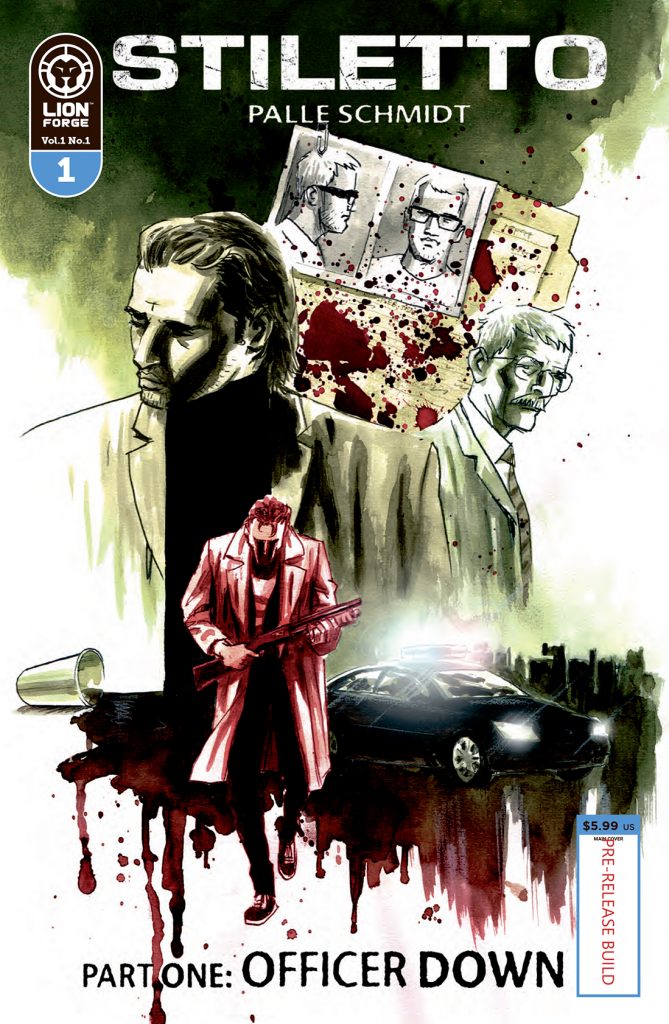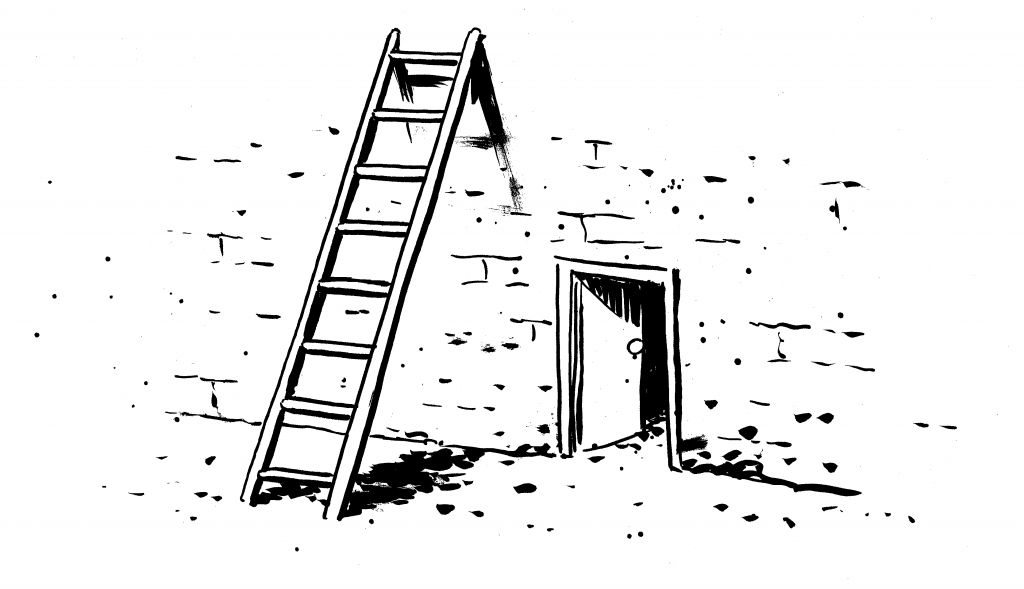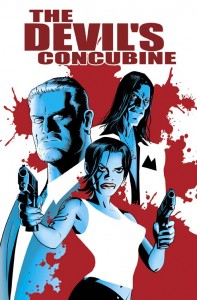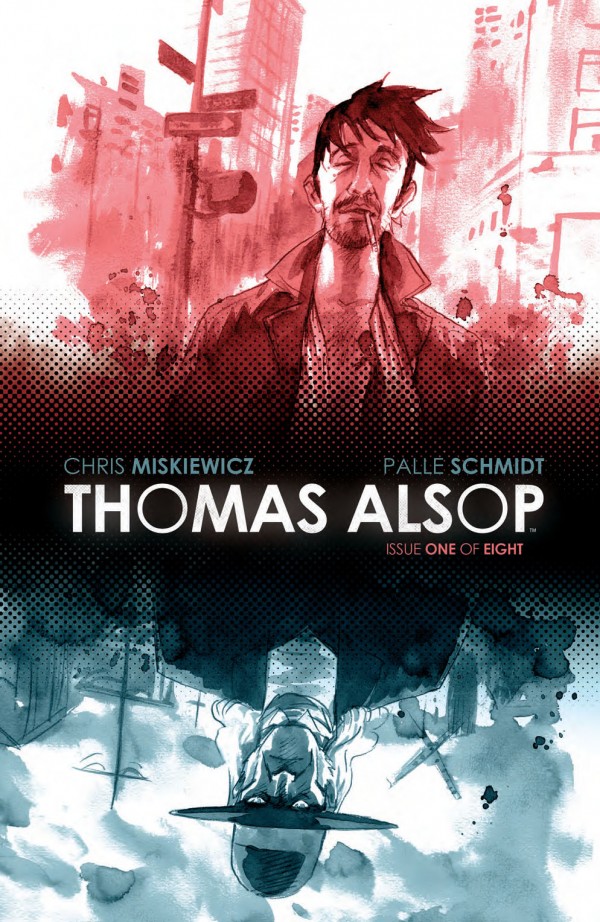
While I was working on The Devil’s Concubine, I had the idea for sort of a sequel, involving the two cops, Maynard and Alphonse. The story is heavily influenced by 70’s cop movies like Serpico and French Connection (the sequel being my favorite) and the inciting incident is more or less lifted from Bullitt. Where The Devil’s Concubine was an attempt to make a slick action movie in comic book form, I wanted STILETTO to have a more gritty and realistic feel to it.
The style is a great departure from earlier, more inspired from my own sketchbook than anything else. Trying to draw in the very slick style of artists like Eduardo Rizzo or my own mentor Peter Snejbjerg never came naturally to me and the process frustrated me to no end. I decided to try “inking” in pencil and painting the whole thing in watercolor – something I was used to doing in my illustration work.
I did a few tests and quickly realized that not only was this drawing process much more fun for me but I could also work way faster. Since making comics takes sooo long, any way to reduce the amount of hours spent on a page is more than welcome.
For the coloringI went for a expressionist approach rather than realism. Since it’s a cop story, the use of the color blue would be obvious. So I decided NOT to use the color blue at all! I only use blue for flashbacks and dream sequences. Keeping the whole book in dirty yellowish clay tones creates a much more startling effect when the characters enter a bar where everything is red or there is a flashback or cut-away panel in blue.
By this point I had stopped comparing myself to Danish peers pretty much altogether and focused on the US market. I felt I had an intriguing premise, a solid script and a style that immediately got people’s attention, when I showed the book to people at cons. So I was surprised when IDW didn’t pick up the book. I thought I was in and then it turned out to be a revolving door!
Although STILETTO was released in Denmark to rave reviews and an award nomination, It took a few years before the book made it to the US market. It only happened because Greg Tumbarello, this guy Chris knew and we kept bumping into at cons, got a new editorial position at Lion Forge. If I remember correctly, I shot Greg a note on Facebook saying congrats on the new job and we got to chatting. He asked about STILETTO, if anyone had picked it up and I was like: “Er, no. You want it?”
Working with Greg on STILETTO (and this book btw!) has been an absolute treat and a truly humbling experience. Greg has turned out to be not only a fun guy to hang out with but also a smart and well articulated editor with a quality lacking in a lot of people working in publishing; he answers his e-mail.
Lessons learned:
Breaking in is a never-ending process and the quality of the work seems not to matter as much as luck or timing. Sometimes a project that seems like a slam dunk will have to take the long road before finding a home. Be patient and persistent. You never know where the next opportunity, ally or friendship will turn up.
This post is an excerpt from my book SOLO – Survival Guide for Creative Freelancers – Pre-order now on Amazon.




